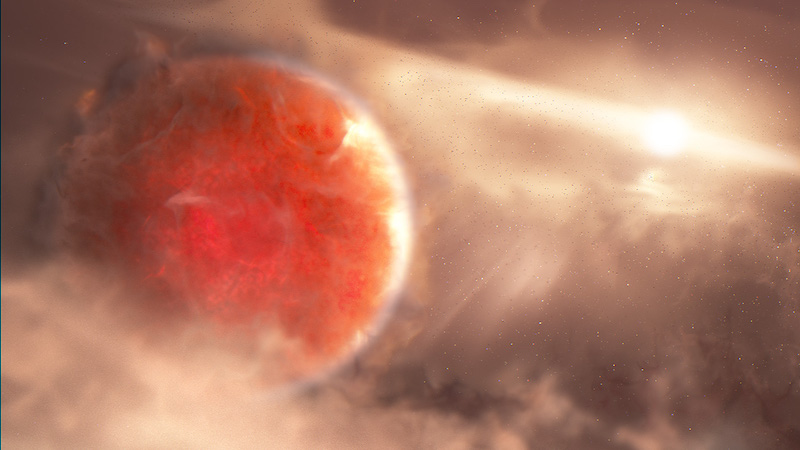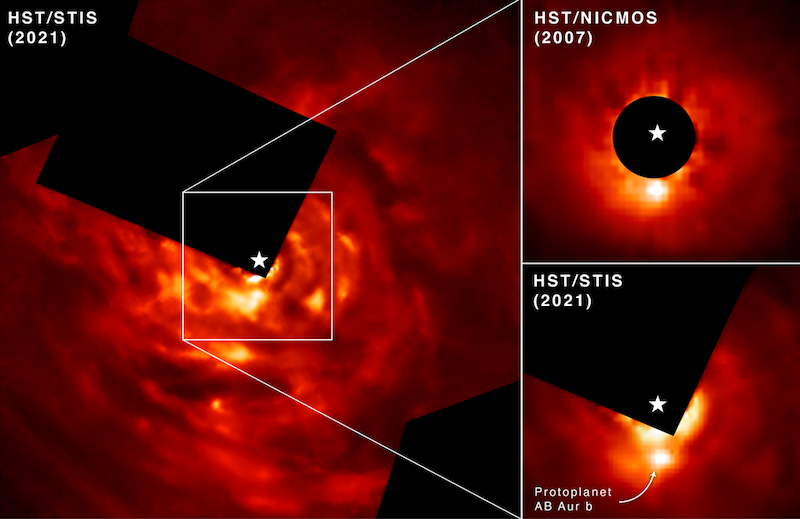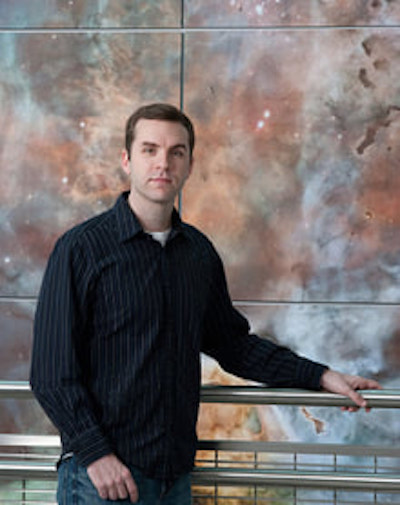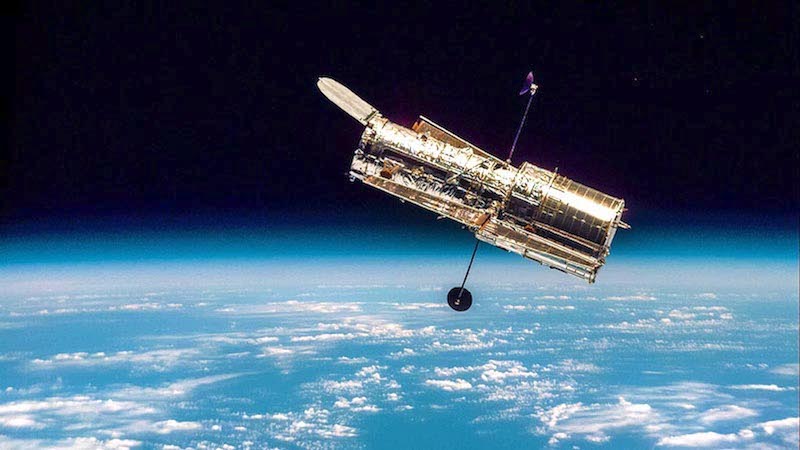
Most planets form by a relatively sedate process called core accretion. It’s basically smaller grains sticking together to make larger grains, until gravity takes over to pull the object into the shape of a ball. But there’s also evidence for a more “intense and violent” planet-forming process, called disk instability. And astronomers have long sought direct observations of this 2nd process, particularly for large gas giant exoplanets, similar to our solar system’s planet Jupiter. This month (April 4, 2022), astronomers announced a Hubble Space Telescope image of a Jupiter-like protoplanet (a planetary embryo) forming via disk instability.
Data from the Hubble Space Telescope and the Subaru Telescope helped confirm the discovery.
The researchers published the peer-reviewed details of their discovery in Nature Astronomy on April 4.

Hubble observes planet forming in an ‘unconventional way’
As described by the press release, this planet – named AB Aurigae b – is forming in an “unconventional way.” Why unconventional? It has long been thought that gas giant planets like Jupiter form from core accretion. In this process, small bits of material, ranging from dust to boulders, collide over time and stick together. This forms a central core, or protoplanet, which then accumulates additional material like dust and gas.
With disk instability, however, the planet forms directly from the protoplanetary disk around the star. This happens when the disk cools and breaks down into smaller planetary-mass fragments that then continue to accumulate material.
The planet that Hubble found appears to be the result of disk instability, not core accretion. Lead researcher Thayne Currie of the Subaru Telescope said:
Nature is clever; it can produce planets in a range of different ways.
New planet is 9 times more massive than Jupiter
The star system that harbors AB Aurigae b is still very young, only about two million years old. That’s like a baby compared to our solar system, which is about 4.6 billion years old. Its new protostar is approximately nine times the mass of Jupiter. It is also very far from its star, 8.6 billion miles to be exact. That’s more than twice the distance of Pluto from our sun.
That great distance also makes the core accretion formation scenario unlikely. The researchers say it would take a very long time, if ever, for a Jupiter-sized planet to form in that way, so far from its star. Therefore, the disk instability process is a better explanation to how the planet is forming. Hubble also observed a distinct spiral structure swirling around the newly-forming planet, also supporting the disk instability hypothesis.

A challenging system to interpret
Infant planets can be difficult to see in protoplanetary disks. There are complex features in the disks that could be mistaken for newly-forming planets like AB Aurigae b. So how did the researchers successfully distinguish this planet? They used two different Hubble instruments: the Space Telescope Imaging Spectrograph (STIS) and the Near Infrared Camera and Multi-Object Spectrograph (NICMOS). Then, the researchers compared that data to data from the planet imaging instrument SCExAO on Japan’s 8.2-meter Subaru Telescope at the summit of Mauna Kea, Hawaii.
As Currie noted:
Interpreting this system is extremely challenging. This is one of the reasons why we needed Hubble for this project, a clean image to better separate the light from the disk and any planet.
As it happens, the disk of dust and gas AB Aurigae is tilted nearly face-on to our view from Earth. That also help the astronomers see the young planet better, with fewer obstructions.
Another factor was the age of Hubble itself. One or two years would be insufficient to determine if AB Aurigae b really was a new planet or not. But Hubble’s data, combined with that from Subaru, cover 13 years overall. Currie explained:
We could not detect this motion on the order of a year or two years. Hubble provided a time baseline, combined with Subaru data, of 13 years, which was sufficient to be able to detect orbital motion.
Hubble and Subaru
Now, there seems to be little doubt that this is indeed a new infant planet and not something else being misinterpreted. Olivier Guyon of the University of Arizona and Subaru Telescope added:
This result leverages ground and space observations and we get to go back in time with Hubble archival observations. AB Aurigae b has now been looked at in multiple wavelengths, and a consistent picture has emerged, one that’s very solid.

New insights into the formation of giant planets
The Hubble observations are the first good evidence that gas giant planets can form from disk instability and not just core accretion. This provides new insights into how planets form overall, and shows that gravity is the main ingredient, whatever the process. As Alan Boss of the Carnegie Institution of Science explained:
This new discovery is strong evidence that some gas giant planets can form by the disk instability mechanism. In the end, gravity is all that counts, as the leftovers of the star-formation process will end up being pulled together by gravity to form planets, one way or the other.
This is just the latest exciting discovery from Hubble. Last week, researchers also announced that Hubble has discovered the most distant star ever seen so far. The star formed in the juvenile universe just 900 million years after the Big Bang.
Bottom line: Astronomers using the Hubble Space Telescope have, for the first time, observed a giant new planet forming around another star via disk instability. The infant world is nine times as massive as Jupiter.
Source: Images of embedded Jovian planet formation at a wide separation around AB Aurigae
The post Hubble sees violent birth of Jupiter-like world first appeared on EarthSky.
0 Commentaires